Name, symbol potassium, K Period period 4 Symbol K Molar mass 39.0983 g/mol Electron configuration [Ar] 4s1 | Appearance silvery gray Atomic mass 39.0983 u ± 0.0001 u Atomic number 19 Melting point 63.5 °C | |
 | ||
Pronunciation /poʊˈtæsiəm/po-TAS-ee-əm | ||
Potassium metal which burns and explodes in water
Potassium is a chemical element with symbol K (derived from Neo-Latin, kalium) and atomic number 19. It was first isolated from potash, the ashes of plants, from which its name derives. In the periodic table, potassium is one of the alkali metals. All of the alkali metals have a single valence electron in the outer electron shell, which is easily removed to create an ion with a positive charge – a cation, which combines with anions to form salts. Potassium in nature occurs only in ionic salts. Elemental potassium is a soft silvery-white alkali metal that oxidizes rapidly in air and reacts vigorously with water, generating sufficient heat to ignite hydrogen emitted in the reaction and burning with a lilac-colored flame. It is found dissolved in sea water (which is 0.04% potassium by weight), and is part of many minerals.
Contents
- Potassium metal which burns and explodes in water
- Potassium periodic table of videos
- Physical
- Chemical
- Isotopes
- Cosmic formation and distribution
- Etymology
- Potash
- The metal
- Geology
- Commercial production
- Biological role
- Biochemical function
- Homeostasis
- Plasma levels
- Control mechanisms
- Renal filtration reabsorption and excretion
- Detection by taste buds
- Adequate intake
- Optimal intake
- Deficient intake
- Supplementation
- Fertilizer
- Food
- Industrial
- Niche uses
- Laboratory uses
- Precautions
- References
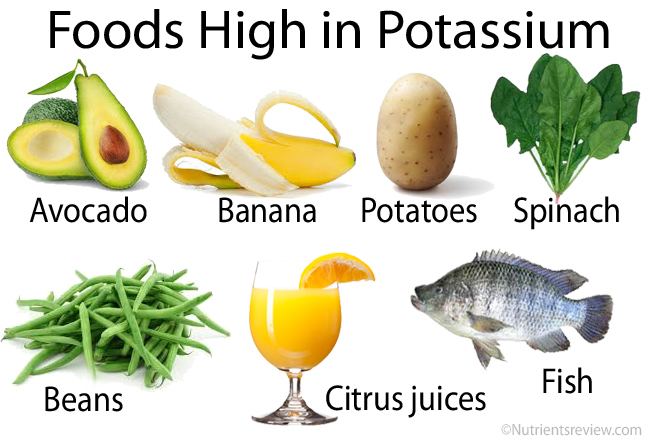
Naturally occurring potassium is composed of three isotopes, of which 40
K is radioactive. Traces of 40
K are found in all potassium, and it is the most common radioisotope in the human body.
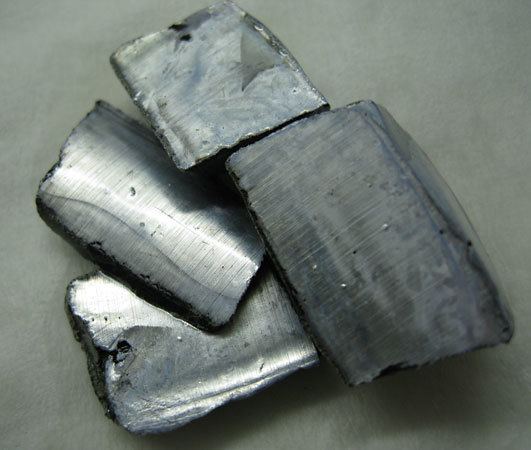
Potassium is chemically very similar to sodium, the previous element in Group 1 of the periodic table. They have a similar ionization energy, which allows for each atom to give up its sole outer electron. That they are different elements that combine with the same anions to make similar salts was suspected in 1702, and was proven in 1807 using electrolysis.
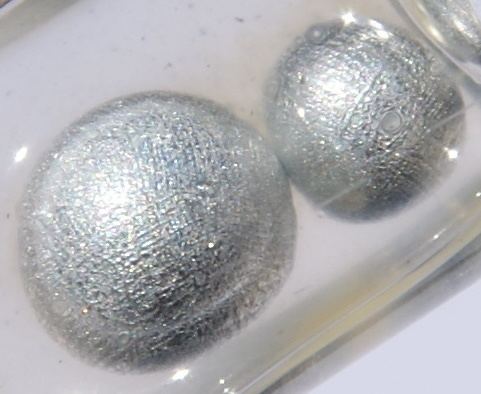
Most industrial applications of potassium exploit the high solubility in water of potassium compounds, such as potassium soaps. Heavy crop production rapidly depletes the soil of potassium, and this can be remedied with agricultural fertilizers containing potassium, accounting for 95% of global potassium chemical production.

Potassium ions are necessary for the function of all living cells. The transfer of potassium ions through nerve cell membranes is necessary for normal nerve transmission; potassium depletion can result in numerous abnormalities, including an abnormal heart rhythm and various electrocardiographic (ECG) abnormalities. Fresh fruits and vegetables are good dietary sources of potassium. The body responds to the influx of dietary potassium, which raises serum potassium levels, with a shift of potassium from outside to inside cells and an increase in potassium excretion by the kidneys.

Potassium periodic table of videos
Physical

Potassium is the second least dense metal after lithium. It is a soft solid with a low melting point, and can be easily cut with a knife. Freshly cut potassium is silvery in appearance, but it begins to tarnish toward gray immediately on exposure to air. In a flame test, potassium and its compounds emit a lilac color with a peak emission wavelength of 766.5 nanometers.
Chemical
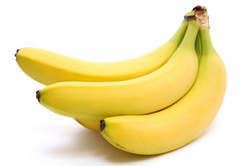
Neutral potassium atoms have 19 electrons, one more than the extremely stable configuration of the noble gas argon. Because of this and its low first ionization energy of 418.8 kJ/mol, the potassium atom is much more likely to lose the last electron and acquire a positive charge than to gain one and acquire a negative charge (though negatively charged alkalide K−
ions are not impossible). This process requires so little energy that potassium is readily oxidized by atmospheric oxygen. In contrast, the second ionization energy is very high (3052 kJ/mol), because removal of two electrons breaks the stable noble gas electronic configuration (the configuration of the inert argon). Potassium therefore does not readily form compounds with the oxidation state of +2 or higher.

Potassium is an extremely active metal that reacts violently with oxygen in water and air. With oxygen it forms potassium peroxide, and with water potassium forms potassium hydroxide. The reaction of potassium with water is dangerous because of its violent exothermic character and the production of hydrogen gas. Hydrogen reacts again with atmospheric oxygen, producing water, which reacts with the remaining potassium. This reaction requires only traces of water; because of this, potassium and the liquid sodium-potassium — NaK — are potent desiccants that can be used to dry solvents prior to distillation.
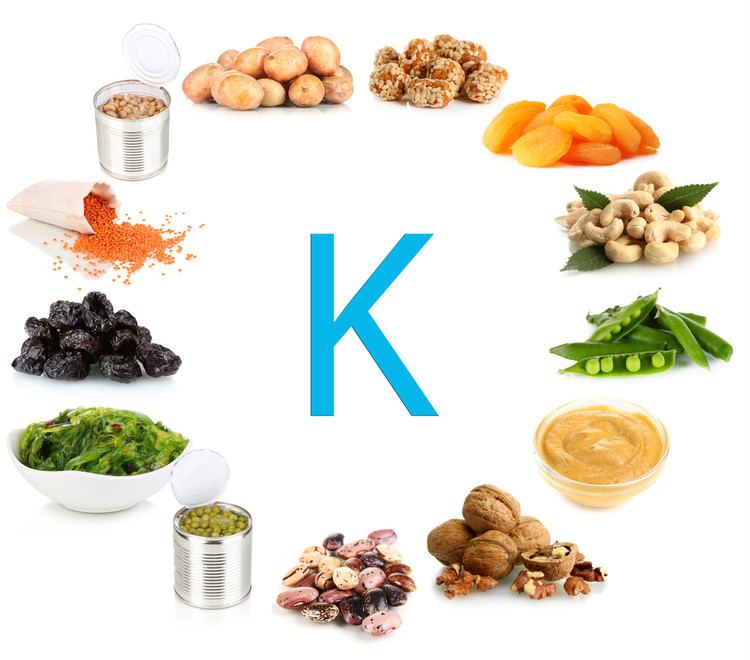
Because of the sensitivity of potassium to water and air, reactions with other elements are possible only in an inert atmosphere such as argon gas using air-free techniques. Potassium does not react with most hydrocarbons such as mineral oil or kerosene. It readily dissolves in liquid ammonia, up to 480 g per 1000 g of ammonia at 0 °C. Depending on the concentration, the ammonia solutions are blue to yellow, and their electrical conductivity is similar to that of liquid metals. In a pure solution, potassium slowly reacts with ammonia to form KNH
2, but this reaction is accelerated by minute amounts of transition metal salts. Because it can reduce the salts to the metal, potassium is often used as the reductant in the preparation of finely divided metals from their salts by the Rieke method. For example, the preparation of magnesium by this method employs potassium as the reductant:
2 + 2 K → Mg + 2 KCl
The only common oxidation state for potassium is +1. Potassium metal is a powerful reducing agent that is easily oxidized to the monopositive cation, K+
. Once oxidized, it is very stable and difficult to reduce back to the metal.
Potassium hydroxide reacts readily with carbon dioxide to produce potassium carbonate, and is used to remove traces of the gas from air. In general, potassium compounds have excellent water solubility, owing to the high hydration energy of the K+
ion. The potassium ion is colorless in water and is very difficult to precipitate; possible precipitation methods include reactions with sodium tetraphenylborate, hexachloroplatinic acid, and sodium cobaltinitrite.
Potassium oxidizes faster than most metals and forms oxides with oxygen-oxygen bonds, as do all alkali metals except lithium. Three species are formed during the reaction: potassium oxide, potassium peroxide, and potassium superoxide formed of three different oxygen-based ions: oxide (O2−
), peroxide (O2−
2), and superoxide (O−
2). The last two species, especially the superoxide, are rare and are formed only in reaction with very electropositive metals; these species contain oxygen-oxygen bonds. All potassium-oxygen binary compounds are known to react with water violently, forming potassium hydroxide. This compound is a very strong alkali, and 1.21 kg of it can dissolve in as little as a liter of water.
Potassium compounds are typically highly ionic and thus most of them are soluble in water. The main species in water solution are the aquated complexes [K(H
2O)
n]+
where n = 6 and 7. Some of the few poorly soluble potassium salts include potassium tetraphenylborate, potassium hexachloroplatinate, and potassium cobaltinitrite.
Isotopes
There are 24 known isotopes of potassium, three of which occur naturally: 39
K (93.3%), 40
K (0.0117%), and 41
K (6.7%). Naturally occurring 40
K has a half-life of 1.250×109 years. It decays to stable 40
Ar by electron capture or positron emission (11.2%) or to stable 40
Ca by beta decay (88.8%). The decay of 40
K to 40
Ar is the basis of a common method for dating rocks. The conventional K-Ar dating method depends on the assumption that the rocks contained no argon at the time of formation and that all the subsequent radiogenic argon (40
Ar) was quantitatively retained. Minerals are dated by measurement of the concentration of potassium and the amount of radiogenic 40
Ar that has accumulated. The minerals best suited for dating include biotite, muscovite, metamorphic hornblende, and volcanic feldspar; whole rock samples from volcanic flows and shallow instrusives can also be dated if they are unaltered. Apart from dating, potassium isotopes have been used as tracers in studies of weathering and for nutrient cycling studies because potassium is a macronutrient required for life.
40
K occurs in natural potassium (and thus in some commercial salt substitutes) in sufficient quantity that large bags of those substitutes can be used as a radioactive source for classroom demonstrations. 40
K is the radioisotope with the largest abundance in the body. In healthy animals and people, 40
K represents the largest source of radioactivity, greater even than 14
C. In a human body of 70 kg mass, about 4,400 nuclei of 40
K decay per second. The activity of natural potassium is 31 Bq/g.
Cosmic formation and distribution
Potassium is formed in supernovas by nucleosynthesis from lighter atoms. Potassium is principally created in Type II supernovas via the explosive oxygen-burning process. 40
K is also formed in s-process nucleosynthesis and the neon burning process.
Potassium makes up about 2.6% of the weight of the earth's crust and is the seventh most abundant element in the crust. It is the 17th most abundant element by weight in the earth, and 20th most abundant element in the solar system. The potassium concentration in seawater is 0.39 g/L (0.039 wt/v%), about one-quarter the concentration of sodium.
Etymology
Neither elemental potassium nor potassium salts (as separate entities from other salts) were known in Roman times, and the Latin name of the element, kalium, is not Classical Latin but rather neo-Latin. Kalium was taken from the word alkali, which in turn came from Arabic: القَلْيَه al-qalyah "plant ashes." The similar-sounding English term alkali is from this same root, whereas the word for potassium in Modern Standard Arabic is بوتاسيوم būtāsyūm.
In 1797, the German chemist Martin Klaproth discovered "potash" in the minerals leucite and lepidolite, and realized that "potash" was not a product of plant growth but was actually a new element, which he proposed to call kali. In 1809, the German physicist and chemist Ludwig Wilhelm Gilbert proposed the names Kalium for Humphry Davy's "potassium" and Natronium for Davy's "sodium". In 1814, the Swedish chemist Berzelius advocated the name kalium for potassium, with the chemical symbol K.
The English name for the element potassium comes from the word "potash", and refers to the method of producing potassium: placing in a pot the ash of burnt wood or tree leaves, adding water, heating, and evaporating the solution.
Potash
Potash is primarily a mixture of potassium salts because plants have little or no sodium content, and the rest of a plant's major mineral content consists of calcium salts of relatively low solubility in water. While potash has been used since ancient times, it was not understood for most of its history to be a fundamentally different substance from sodium mineral salts. Georg Ernst Stahl obtained experimental evidence that led him to suggest the fundamental difference of sodium and potassium salts in 1702, and Henri Louis Duhamel du Monceau was able to prove this difference in 1736. The exact chemical composition of potassium and sodium compounds, and the status as chemical element of potassium and sodium, was not known then, and thus Antoine Lavoisier did not include the alkali in his list of chemical elements in 1789. For a long time the only significant applications for potash were the production of glass, bleach, soap and gunpowder as potassium nitrate. Potassium soaps from animal fats and vegetable oils were especially prized because they tend to be more water-soluble and of softer texture, and are therefore known as soft soaps. The discovery by Justus Liebig in 1840 that potassium is a necessary element for plants and that most types of soil lack potassium caused a steep rise in demand for potassium salts. Wood-ash from fir trees was initially used as a potassium salt source for fertilizer, but, with the discovery in 1868 of mineral deposits containing potassium chloride near Staßfurt, Germany, the production of potassium-containing fertilizers began at an industrial scale. Other potash deposits were discovered, and by the 1960s Canada became the dominant producer.
The metal
Potassium metal was first isolated in 1807 in England by Sir Humphry Davy, who derived it from caustic potash (KOH, potassium hydroxide) by electrolysis of molten KOH with the newly discovered voltaic pile. Potassium was the first metal that was isolated by electrolysis. Later in the same year, Davy reported extraction of the metal sodium from a mineral derivative (caustic soda, NaOH, or lye) rather than a plant salt, by a similar technique, demonstrating that the elements, and thus the salts, are different. Although the production of potassium and sodium metal should have shown that both are elements, it took some time before this view was universally accepted.
Geology
Elemental potassium does not occur in nature because of its high reactivity. It reacts violently with water (see section Precautions below) and also reacts with oxygen. Orthoclase (potassium feldspar) is a common rock-forming mineral. Granite for example contains 5% potassium, which is well above the average in the Earth's crust. Sylvite (KCl), carnallite (KCl·MgCl
2·6(H
2O)), kainite (MgSO
4·KCl·3H
2O) and langbeinite (MgSO
4·K
2SO
4) are the minerals found in large evaporite deposits worldwide. The deposits often show layers starting with the least soluble at the bottom and the most soluble on top. Deposits of niter (potassium nitrate) are formed by decomposition of organic material in contact with atmosphere, mostly in caves; because of the good water solubility of niter the formation of larger deposits requires special environmental conditions.
Commercial production
Potassium salts such as carnallite, langbeinite, polyhalite, and sylvite form extensive evaporite deposits in ancient lake bottoms and seabeds, making extraction of potassium salts in these environments commercially viable. The principal source of potassium – potash – is mined in Canada, Russia, Belarus, Germany, Israel, United States, Jordan, and other places around the world. The first mined deposits were located near Staßfurt, Germany, but the deposits span from Great Britain over Germany into Poland. They are located in the Zechstein and were deposited in the Middle to Late Permian. The largest deposits ever found lie 1,000 meters (3,300 feet) below the surface of the Canadian province of Saskatchewan. The deposits are located in the Elk Point Group produced in the Middle Devonian. Saskatchewan, where several large mines have operated since the 1960s pioneered the technique of freezing of wet sands (the Blairmore formation) to drive mine shafts through them. The main potash mining company in Saskatchewan is the Potash Corporation of Saskatchewan. The water of the Dead Sea is used by Israel and Jordan as a source of potash, while the concentration in normal oceans is too low for commercial production at current prices.
Several methods are used to separate potassium salts from sodium and magnesium compounds. The most-used method is fractional precipitation using the solubility differences of the salts at different temperatures. Electrostatic separation of the ground salt mixture is also used in some mines. The resulting sodium and magnesium waste is either stored underground or piled up in slag heaps. Most of the mined potassium mineral ends up as potassium chloride after processing. The mineral industry refers to potassium chloride either as potash, muriate of potash, or simply MOP.
Pure potassium metal can be isolated by electrolysis of its hydroxide in a process that has changed little since Davy. Although the electrolysis process was developed and used in industrial scale in the 1920s, the thermal method by reacting sodium with potassium chloride in a chemical equilibrium reaction became the dominant method in the 1950s.
The production of sodium potassium alloys is accomplished by changing the reaction time and the amount of sodium used in the reaction. The Griesheimer process employing the reaction of potassium fluoride with calcium carbide was also used to produce potassium.
Na + KCl → NaCl + K (Thermal method)2 KF + CaC2 → 2 K + CaF
2 + 2 C (Griesheimer process)
Reagent-grade potassium metal costs about $10.00/pound ($22/kg) in 2010 when purchased by the tonne. Lower purity metal is considerably cheaper. The market is volatile because long-term storage of the metal is difficult. It must be stored in a dry inert gas atmosphere or anhydrous mineral oil to prevent the formation of a surface layer of potassium superoxide, a pressure-sensitive explosive that detonates when scratched. The resulting explosion often starts a fire difficult to extinguish.
Biological role
Potassium is the eighth or ninth most common element by mass (0.2%) in the human body, so that a 60 kg adult contains a total of about 120 g of potassium. The body has about as much potassium as sulfur and chlorine, and only calcium and phosphorus are more abundant (with the exception of the ubiquitous CHON elements). Potassium ions are present in a wide variety of proteins and enzymes.
Biochemical function
Potassium levels influence multiple physiological processes, including
ions are larger than Na+
ions, and ion channels and pumps in cell membranes can differentiate between the two ions, actively pumping or passively passing one of the two ions while blocking the other.
Homeostasis
Potassium homeostasis denotes the maintenance of the total body potassium content, plasma potassium level, and the ratio of the intracellular to extracellular potassium concentrations within narrow limits, in the face of pulsatile intake (meals), obligatory renal excretion, and shifts between intracellular and extracellular compartments.
Plasma levels
Plasma potassium is normally kept at 3.5 to 5.0 millimoles (mmol) [or milliequivalents (mEq)] per liter by multiple mechanisms. Levels outside this range are associated with an increasing rate of death from multiple causes, and some cardiac, kidney, and lung diseases progress more rapidly if serum potassium levels are not maintained within the normal range.
An average meal of 40-50 mmol presents the body with more potassium than is present in all plasma (20-25 mmol). However, this surge causes the plasma potassium to rise only 10% at most as a result of prompt and efficient clearance by both renal and extra-renal mechanisms.
Hypokalemia, a deficiency of potassium in the plasma, can be fatal if severe. Common causes are increased gastrintestinal loss (vomiting, diarrhea), and increased renal loss (diuresis). Deficiency symptoms include muscle weakness, paralytic ileus, ECG abnormalities, decreased reflex response; and in severe cases, respiratory paralysis, alkalosis, and cardiac arrhythmia.
Control mechanisms
Potassium content in the plasma is tightly controlled by four basic mechanisms, which have various names and classifications. The four are 1) a reactive negative-feedback system, 2) a reactive feed-forward system, 3) a predictive or circadian system, and 4) an internal or cell membrane transport system. Collectively, the first three are sometimes termed the "external potassium homeostasis system"; and the first two, the "reactive potassium homeostasis system".
Renal filtration, reabsorption, and excretion
Renal handling of potassium is closely connected to sodium handling. Potassium is the major cation (positive ion) inside animal cells [150 mmol/L, (4.8 g)], while sodium is the major cation of extracellular fluid [150 mmol/L, (3.345 g)]. In the kidneys, about 180 liters of plasma is filtered through the glomeruli and into the renal tubules per day. This filtering involves about 600 g of sodium and 33 g of potassium. Since only 1–10 g of sodium and 1–4 g of potassium are likely to be replaced by diet, renal filtering must efficiently reabsorb the remainder from the plasma.
Sodium is reabsorbed to maintain extracellular volume, osmotic pressure, and serum sodium concentration within narrow limits; potassium is reabsorbed to maintain serum potassium concentration within narrow limits. Sodium pumps in the renal tubules operate to reabsorb sodium. Potassium must be conserved also, but, because the amount of potassium in the blood plasma is very small and the pool of potassium in the cells is about thirty times as large, the situation is not so critical for potassium. Since potassium is moved passively in counter flow to sodium in response to an apparent (but not actual) Donnan equilibrium, the urine can never sink below the concentration of potassium in serum except sometimes by actively excreting water at the end of the processing. Potassium is excreted twice and reabsorbed three times before the urine reaches the collecting tubules. At that point, urine usually has about the same potassium concentration as plasma. At the end of the processing, potassium is secreted one more time if the serum levels are too high.
With no potassium intake, it is excreted at about 200 mg per day until, in about a week, potassium in the serum declines to a mildly deficient level of 3.0–3.5 mmol/L. If potassium is still withheld, the concentration continues to fall until a severe deficiency causes eventual death.
The potassium moves passively through pores in the cell membrane. When ions move through pumps there is a gate in the pumps on either side of the cell membrane and only one gate can be open at once. As a result, approximately 100 ions are forced through per second. Pores have only one gate, and there only one kind of ion can stream through, at 10 million to 100 million ions per second. The pores require calcium to open although it is thought that the calcium works in reverse by blocking at least one of the pores. Carbonyl groups inside the pore on the amino acids mimic the water hydration that takes place in water solution by the nature of the electrostatic charges on four carbonyl groups inside the pore.
Detection by taste buds
Potassium can be detected by taste because it triggers three of the five types of taste sensations, according to concentration. Dilute solutions of potassium ions taste sweet, allowing moderate concentrations in milk and juices, while higher concentrations become increasingly bitter/alkaline, and finally also salty to the taste. The combined bitterness and saltiness of high-potassium solutions makes high-dose potassium supplementation by liquid drinks a palatability challenge.
Adequate intake
Adequate potassium intake is achieved by eating a variety of foods. Potassium is present in all fruits, vegetables, meat and fish. Foods with high potassium concentrations include yam, parsley, dried apricots, milk, chocolate, all nuts (especially almonds and pistachios), potatoes, bamboo shoots, bananas, avocados, coconut water, soybeans, and bran. Dried apricots have the highest concentration of potassium by weight of any food. Many processed foods contain no potassium.
Optimal intake
Epidemiological studies indicate that diets high in potassium can reduce the risk of hypertension and possibly stroke (by a mechanism independent of blood pressure). The 2004 guidelines of the Institute of Medicine specify a Dietary Reference Intake (DRI]) of 4,700 mg of potassium (100 mEq); most Americans consume only half that amount per day. Likewise, in the European Union, in particular in Germany and Italy, insufficient potassium intake is somewhat common. However, the British NHS recommends a lower intake, saying that adults need 3,500 mg per day and that excess amounts may cause health problems such as stomach pain and diarrhoea. A meta-analysis concluded that a 1640 mg increase in the daily intake of potassium was associated with a 21% lower risk of stroke.
Deficient intake
Diets low in potassium can lead to hypertension and hypokalemia.
Supplementation
Supplements of potassium are most widely used in conjunction with diuretics that block reabsorption of sodium and water upstream from the distal tubule (thiazides and loop diuretics), because this promotes increased distal tubular potassium secretion, with resultant increased potassium excretion. A variety of prescription and over-the counter supplements are available. Potassium chloride may be dissolved in water, but the salty/bitter taste make liquid supplements unpalatable. Typical doses range from 10 mmol (400 mg), to 20 mmol (800 mg). Potassium is also available in tablets or capsules, which are formulated to allow potassium to leach slowly out of a matrix, since very high concentrations of potassium ion that occur adjacent to a solid tablet can injure the gastric or intestinal mucosa. For this reason, non-prescription potassium pills are limited by law in the US to a maximum of 99 mg of potassium.
Since the kidneys are the site of potassium excretion, individuals with impaired kidney function are at risk for hyperkalemia if dietary potassium and supplements are not restricted. The more severe the impairment, the more severe is the restriction necessary to avoid hyperkalemia.
Fertilizer
Potassium ions are an essential component of plant nutrition and are found in most soil types. They are used as a fertilizer in agriculture, horticulture, and hydroponic culture in the form of chloride (KCl), sulfate (K
2SO
4), or nitrate (KNO
3). Agricultural fertilizers consume 95% of global potassium chemical production, and about 90% of this potassium is supplied as KCl. The potassium content of most plants range from 0.5% to 2% of the harvested weight of crops, conventionally expressed as amount of K
2O. Modern high-yield agriculture depends upon fertilizers to replace the potassium lost at harvest. Most agricultural fertilizers contain potassium chloride, while potassium sulfate is used for chloride-sensitive crops or crops needing higher sulfur content. The sulfate is produced mostly by decomposition of the complex minerals kainite (MgSO
4·KCl·3H
2O) and langbeinite (MgSO
4·K
2SO
4). Only a very few fertilizers contain potassium nitrate. In 2005, about 93% of world potassium production was consumed by the fertilizer industry.
Food
The potassium cation is a nutrient necessary for human life and health. Potassium chloride and bicarbonate are used by those seeking to control hypertension. The USDA lists tomato paste, orange juice, beet greens, white beans, potatoes, bananas and many other dietary sources of potassium, ranked in descending order according to potassium content.
Potassium sodium tartrate (KNaC
4H
4O
6, Rochelle salt) is the main constituent of baking powder; it is also used in the silvering of mirrors. Potassium bromate (KBrO
3) is a strong oxidizer (E924), used to improve dough strength and rise height. Potassium bisulfite (KHSO
3) is used as a food preservative, for example in wine and beer-making (but not in meats). It is also used to bleach textiles and straw, and in the tanning of leathers.
Industrial
Major potassium chemicals are potassium hydroxide, potassium carbonate, potassium sulfate, and potassium chloride. Megatons of these compounds are produced annually.
Potassium hydroxide KOH is a strong base, which is used in industry to neutralize strong and weak acids, to control pH and to manufacture potassium salts. It is also used to saponify fats and oils, in industrial cleaners, and in hydrolysis reactions, for example of esters.
Potassium nitrate (KNO
3) or saltpeter is obtained from natural sources such as guano and evaporites or manufactured via the Haber process; it is the oxidant in gunpowder (black powder) and an important agricultural fertilizer. Potassium cyanide (KCN) is used industrially to dissolve copper and precious metals, in particular silver and gold, by forming complexes. Its applications include gold mining, electroplating, and electroforming of these metals; it is also used in organic synthesis to make nitriles. Potassium carbonate (K
2CO
3 or potash) is used in the manufacture of glass, soap, color TV tubes, fluorescent lamps, textile dyes and pigments. Potassium permanganate (KMnO
4) is an oxidizing, bleaching and purification substance and is used for production of saccharin. Potassium chlorate (KClO
3) is added to matches and explosives. Potassium bromide (KBr) was formerly used as a sedative and in photography.
Potassium chromate (K
2CrO
4) is used in inks, dyes, stains (bright yellowish-red color); in explosives and fireworks; in the tanning of leather, in fly paper and safety matches, but all these uses are due to the properties of chromate ion containment rather than potassium ions.
Niche uses
There are thousands of uses of various potassium compounds. One example is potassium superoxide, KO
2, an orange solid that acts as a portable source of oxygen and a carbon dioxide absorber. It is widely used in respiration systems in mines, submarines and spacecraft as it takes less volume than the gaseous oxygen.
2 + 2 CO2 → 2 K
2CO
3 + 3 O
2
Another example is potassium cobaltinitrite, K
3[Co(NO
2)
6], which is used as artist's pigment under the name of Aureolin or Cobalt Yellow.
Laboratory uses
An alloy of sodium and potassium, NaK is a liquid used as a heat-transfer medium and a desiccant for producing dry and air-free solvents. It can also be used in reactive distillation. The ternary alloy of 12% Na, 47% K and 41% Cs has the lowest melting point of −78 °C of any metallic compound.
Metallic potassium is used in several types of magnetometers.
Precautions
Potassium metal reacts violently with water producing potassium hydroxide (KOH) and hydrogen gas.
2 K (s) + 2 H2O (l) → 2 KOH (aq) + H2↑ (g)
This reaction is exothermic and releases enough heat to ignite the resulting hydrogen in the presence of oxygen, possibly explosively splashing onlookers with potassium hydroxide, which is a strong alkali that destroys living tissue and causes skin burns. Finely grated potassium ignites in air at room temperature. The bulk metal ignites in air if heated. Because its density is 0.89 g/cm3, burning potassium floats in water that exposes it to atmospheric oxygen. Many common fire extinguishing agents, including water, either are ineffective or make a potassium fire worse. Nitrogen, argon, sodium chloride (table salt), sodium carbonate (soda ash), and silicon dioxide (sand) are effective if they are dry. Some Class D dry powder extinguishers designed for metal fires are also effective. These agents deprive the fire of oxygen and cool the potassium metal.
Potassium reacts violently with halogens and detonates in the presence of bromine. It also reacts explosively with sulfuric acid. During combustion, potassium forms peroxides and superoxides. These peroxides may react violently with organic compounds such as oils. Both peroxides and superoxides may react explosively with metallic potassium.
Because potassium reacts with water vapor in the air, it is usually stored under anhydrous mineral oil or kerosene. Unlike lithium and sodium, however, potassium should not be stored under oil for longer than 6 months, unless in an inert (oxygen free) atmosphere, or under vacuum. After prolonged storage in air dangerous shock-sensitive peroxides can form on the metal and under the lid of the container, and can detonate upon opening.
Because of the highly reactive nature of potassium metal, it must be handled with great care, with full skin and eye protection and preferably an explosion-resistant barrier between the user and the metal. Ingestion of large amounts of potassium compounds can lead to hyperkalemia strongly influencing the cardiovascular system. Potassium chloride is used in the United States for lethal injection executions.
